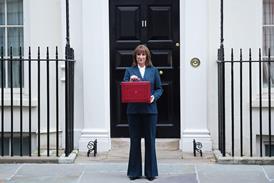Section 1 of the Climate Change Act 2008 (CCA 2008), as amended by the Climate Change Act 2008 (2050 Target Amendment) Order 2019, requires that UK carbon levels are reduced by 100% (from 1990 levels), including greenhouse gas emissions from buildings. The Energy Efficiency (Private Rented Property) (England and Wales) Regulations 2015 (MEES) are part of a package of measures to achieve this by improving the energy efficiency of existing buildings.

In 2014 the government consulted on the implementation of MEES in relation to domestic and non-domestic property. The non-domestic consultation noted that ‘in the longer term, UK buildings would need to reach energy efficiency standards of close to an A Energy Performance Certificate (EPC) rating’ (emphasis added).
In October 2017, the government published its Clean Growth Strategy (CGS). Its overriding theme was a reduction of carbon emissions and a resultant commitment to tackle energy performance standards across the private rented sector, with all private rented homes being upgraded to EPC B or C by 2030, and as many homes as possible reaching EPC C by 2035.
Several consultations relating to MEES and EPCs were published under the CGS:
l In July 2018 a call for evidence on EPCs for buildings which explored further ‘trigger points’ for requiring an EPC, and reducing the validity period for EPCs (currently 10 years).
l In July 2018 a call for evidence on helping businesses improve the way they use energy set out possible approaches to improving energy efficiency in business and industry by 20% by 2030. The response noted that some stakeholders favoured a staged increment of two to three years in raising energy efficiency targets.
From 1 April 2019 the Energy Efficiency (Private Rented Property) (England and Wales) (Amendment) Regulations 2018 require landlords of domestic property to self-fund energy efficiency improvements up to a cost cap of £3,500.
In October 2019 the government published a consultation on the Future Homes Standard (FHS): changes to Part L and Part F of the Building Regulations for new dwellings. The consultation details plans for the FHS in England, requiring all new-build homes to be future-proofed with low carbon heating and banning polluting fossil fuel heating systems from new homes by 2025.
Also in October 2019 the government published its consultation on the future trajectory of MEES for commercial properties. This caused quite a stir. Views were sought on (among other things) increasing the energy efficiency standard for commercial property from E to B (the preferred option) or, alternatively, from E to C, by 1 April 2030 and whether the increase should be introduced incrementally or by a single implementation date.
The Welsh government is currently consulting (until 12 March) on proposals to introduce energy standards for new homes which will require all new Welsh homes to be heated and powered exclusively from clean energy sources from 2025.
Where are we now?
Landlords well know that currently the MEES prohibit them from granting new leases or renewal leases of properties with EPC ratings of F or G (‘substandard property’). Before such properties can be let, cost-effective energy efficiency improvements must be performed so that the property attains an EPC rating of E or above or the landlord must register an exemption. MEES do not apply where a property is not required to have an EPC under the Energy Performance of Buildings (England and Wales) Regulations 2012.
Where are we going?
MEES are central to the government’s drive to increase environmental performance in the built environment. So what can be expected with a degree of certainty?
In general
- The number of properties falling within the MEES is likely to increase with expansion of triggers requiring an EPC to be obtained and the reduction of the validity period of EPCs.
- Further regular reviews of the MEES at no more than five-yearly intervals.
Residential
- From 1 April 2020 landlords may not continue to lease substandard property under existing assured shorthold, assured, regulated or domestic agricultural tenancies.
- All new-build homes will need to have low carbon heating by 2025.
- The Domestic Premises (Energy Performance) Bill (DP(EP)B), currently making its way through parliament, will require publication during 2020/early 2021 of a plan for meeting the CGS targets to ensure that all domestic properties (England and Wales) have a EPC rating of B and C by 1 January 2035. The government has promised consultation in 2020 on the future trajectory of the MEES for domestic properties.
- Regulations requiring mortgage lenders to provide information regarding the energy performance of properties in their portfolio (DP(EP)B) (in line with the government’s Green Finance Strategy).
Commercial
- From 1 April 2023, commercial landlords may not continue to lease substandard commercial property.
- Consultation in 2020 on introducing mandatory in-use energy performance rating for buildings. On 27 January the Department for Business, Energy and Industrial Strategy issued a Whole Life Cost of Energy calculator to help building owners and operators calculate the cost of energy used to heat, cool and power buildings.
- Possible obligations on funders of commercial property similar to those imminent for mortgage providers.
While it is clear that the MEES trajectory is upwards only, the industry needs clarity on the road ahead.
Melissa Moore is a lawyer in the PSLProperty team at LexisNexis































No comments yet